When it comes to ridding your garden and yard of invasive plants, understanding the plant’s phenology can prove to be incredibly helpful information. “Phenology” is the timing of biological events. In plants, this can refer to when the plant leafs out, flowers, or sets seed. Different treatment options are most effective during different times in the plant’s life cycle. Mowing, for example, is best done in the spring before an invasive plant sets seed.
For many invasive plants, particularly woody types, fall is the ideal time to tackle removal. Tree stumps are easier to access without wrestling heavy understory vegetation. Many invasive plants like burning bush and Asiatic bittersweet have brightly colored berries that persist well into winter, making them easy to identify in the graying landscape. Semi-evergreen plants are still holding on to their foliage.
Fall is also the time when trees and shrubs are busy directing energy towards their roots for overwintering. Chemical treatment at this time will ensure that herbicide gets carried down towards the roots, where it can be the most effective. In the spring, when plants are sending moisture, sap, and energy upwards to new leaves, herbicide won’t be absorbed quite as easily by the roots.
A note about herbicides: Keep in mind that chemical herbicides always pose a risk to environmental and human health. Use as a last resort and with an abundance of caution. Follow the correct dosage as indicated on the container, and be sure to check state, local, and federal regulations prior to applying near bodies of water or wetlands.
Now, roll up your sleeves and get to work!
Asiatic Bittersweet
| BOTANICAL NAME | Celastrus orbiculatus |
| PLANT TYPE | Deciduous woody vine |
| NATIVE ALTERNATIVES | American bittersweet, Trumpetvine |
Asiatic bittersweet is a deciduous, woody vine that can reach impressive lengths of up to 60 feet. This fast-growing plant invades fields and forest edges, smothering native vegetation. Reddish orange fruits form in the fall and hang on the plant through winter.
Birds and small mammals eat and disperse the berries. Unsuspecting humans further exacerbate the spread of this plant by collecting the berries for holiday wreaths, then toss them outside.
Small vines can be removed by hand. However, large established Asiatic bittersweet plants will need a more aggressive approach. Cut the base of the plant in the fall. You may need to repeat this several years in a row to get the plant under control, but be persistent! Look out for suckers that emerge as a result of your cutting. Remove these each time you remove from the initial stem.
Autumn Olive
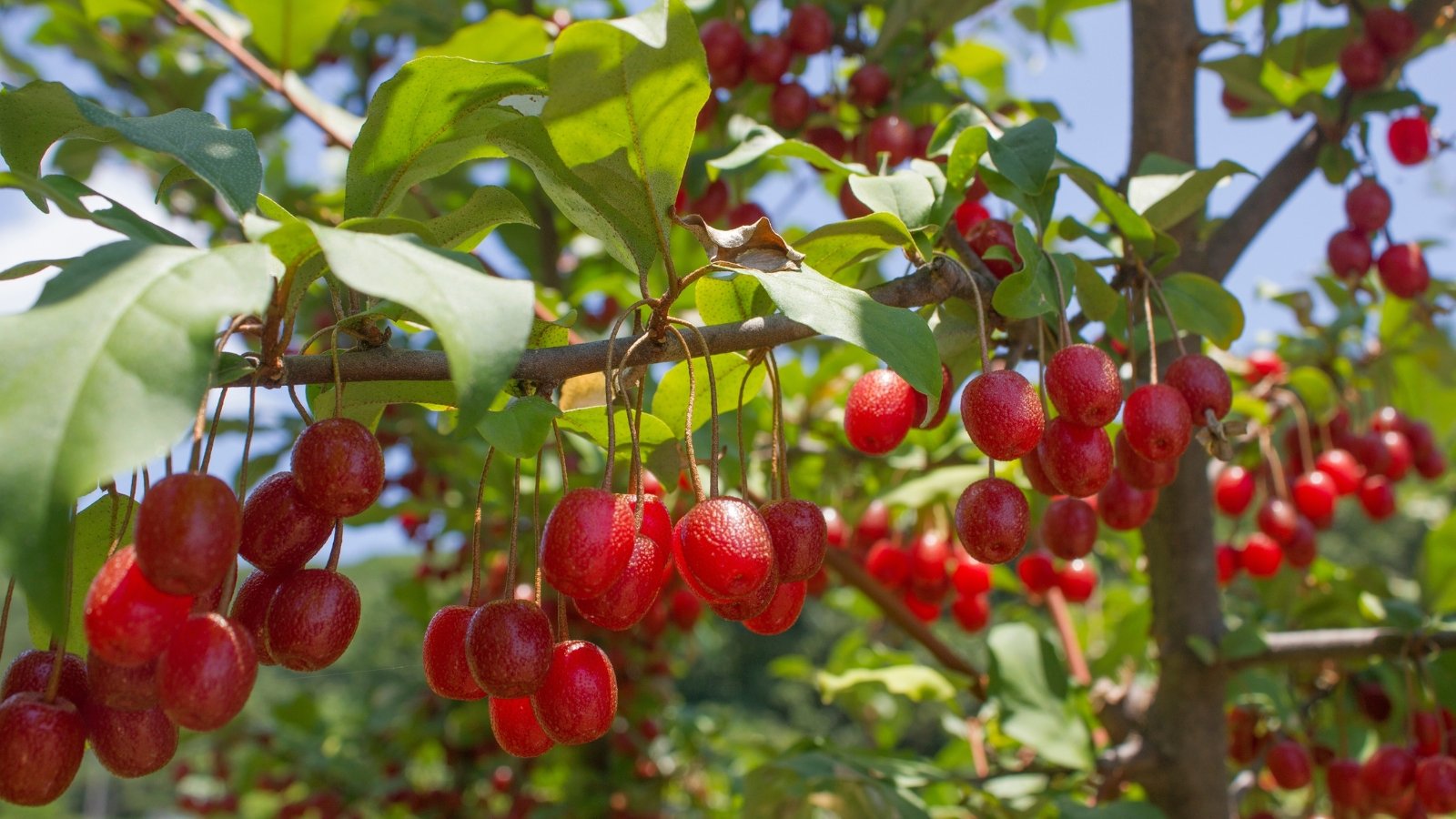
| BOTANICAL NAME | Elaeagnus umbellata |
| PLANT TYPE | Deciduous shrub |
| NATIVE ALTERNATIVES | Cranberrybush viburnam |
Autumn olive is a deciduous shrub that sports small white flowers in the spring and bright red berries in the fall. Initially introduced to North America as an erosion control shrub, it escaped cultivation. This plant easily spreads via seeds into fields and thickets. Its ability to fix nitrogen helps it succeed in all types of soils and outcompete native plants.
In the fall, cut the autumn olive close to the ground. Then, apply a systemic herbicide such as glyphosate or triclopyr to the remaining stump. You can mix your solution with paint and paint it on the stump to indicate where you’ve applied the chemical. This “cut stump” method works well because it targets just the individual invasive plant while avoiding nearby native plants.
Burning Bush
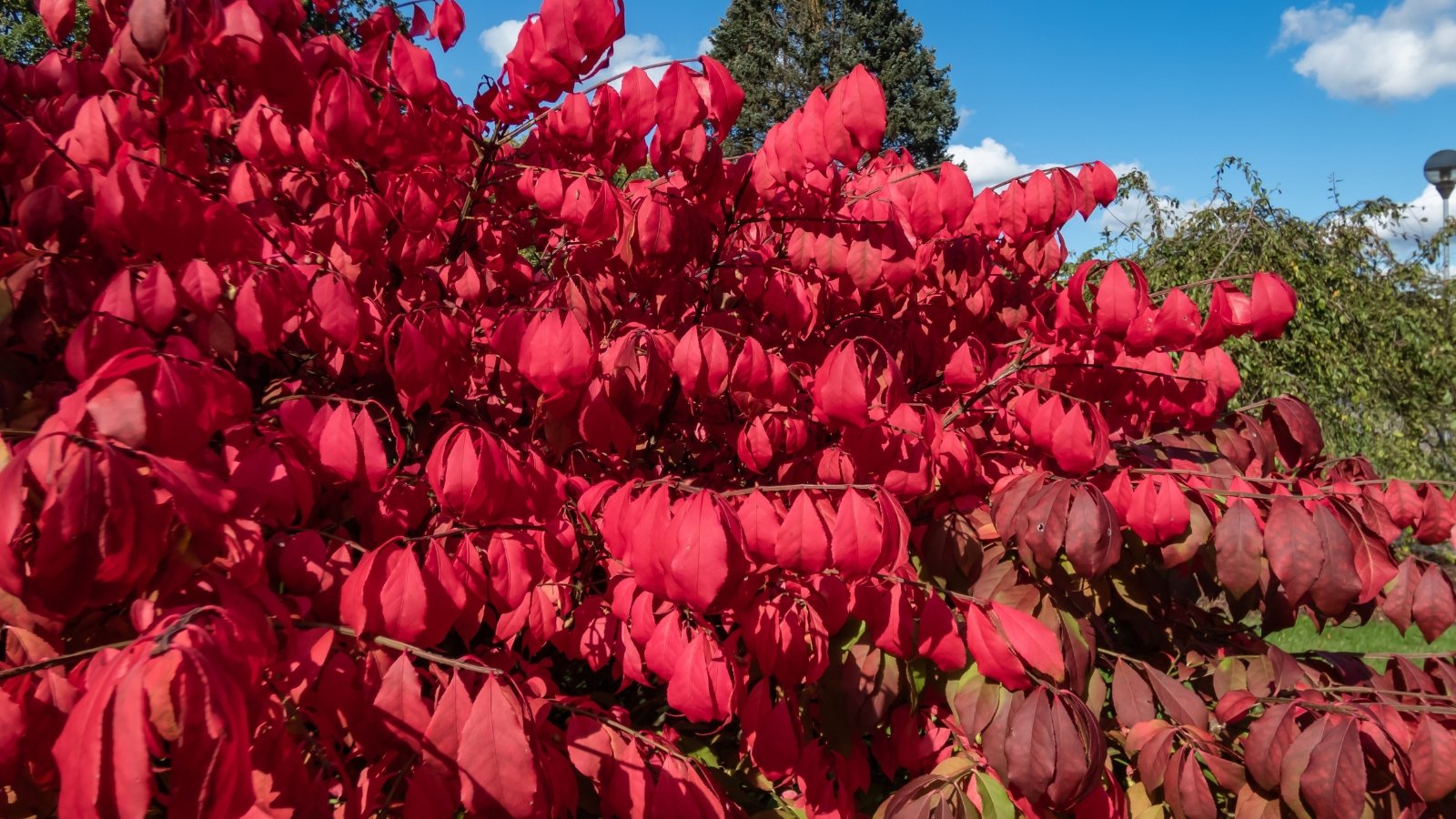
| BOTANICAL NAME | Euonymus alatus |
| PLANT TYPE | Deciduous shrub |
| NATIVE ALTERNATIVES | Fragrant sumac, Oakleaf hydrangea |
Known as winged burning bush, winged euonymus, or simply, burning bush, this deciduous shrub from China was once popular in commercial and residential landscapes for its bold foliage and red berries. Unfortunately, this plant has spread aggressively into forests, roadsides, and fields throughout the East and Midwest. This adaptable plant tolerates all types of soil and grows easily in sun or shade, making it pervasive in varying conditions.
Fall is a great time to remove burning bush. This shrub’s bright red leaves and berries that persist well into the winter make it easily identifiable. Sprouts and small saplings can be hand-pulled. Be sure to dig up the entire root system.
Cutting burning bush without removing the root systems or following up with an herbicide application will most likely lead to re-sprouting—these are very persistent plants! Replace burning bush with a native alternative, like oakleaf hydrangea or fragrant sumac, both of which bring plenty of gorgeous fall color to the garden.
Callery Pear
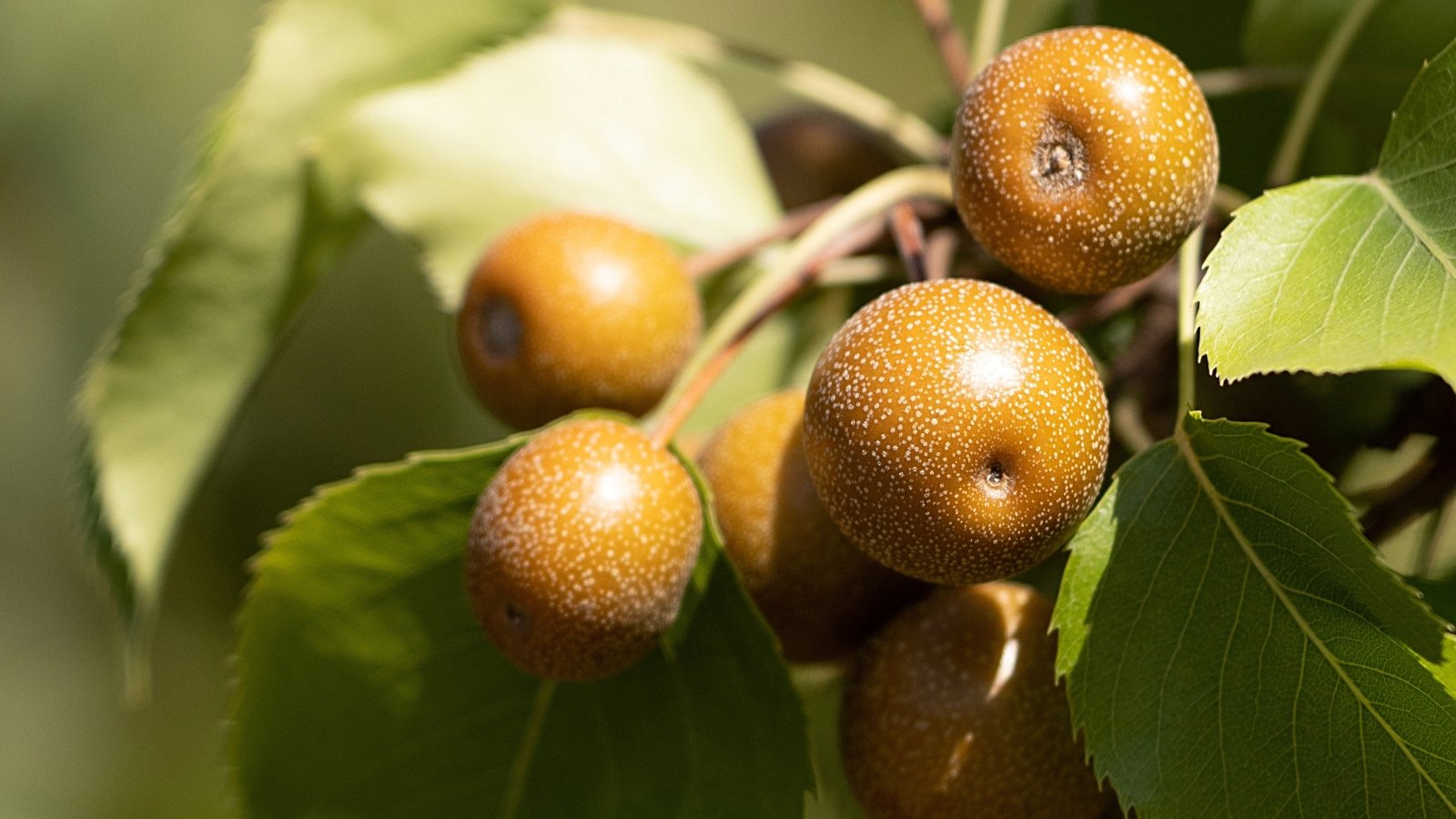
| BOTANICAL NAME | Pyrus calleryana |
| PLANT TYPE | Deciduous tree |
| NATIVE ALTERNATIVES | Flowering dogwood, Redbud |
Callery pears were believed to be sterile when they were introduced to North America. However, it is now known that they will cross-pollinate with other tree species to create a thicket of hybrid trees. Callery pear trees, also referred to as ‘Bradford’ pear, can easily take over fields, roadsides, park spaces, and forest understory areas. These are brittle trees outside their native range of Europe. They can pose hazards for North American homeowners after about a decade of growth.
Controlling callery pear is easiest when plants are small and the entire tree and root ball can be removed. Cut down trees at the stump in the fall, and immediately follow up with an application of herbicide on the stump.
Avoid mowing a plant down with no subsequent herbicide; new growth will just sprout the following spring. Callery pear trees also respond to bark girdling, a technique that involves removing the bark in a ring around the trunk, slowly killing it.
Chinese Privet
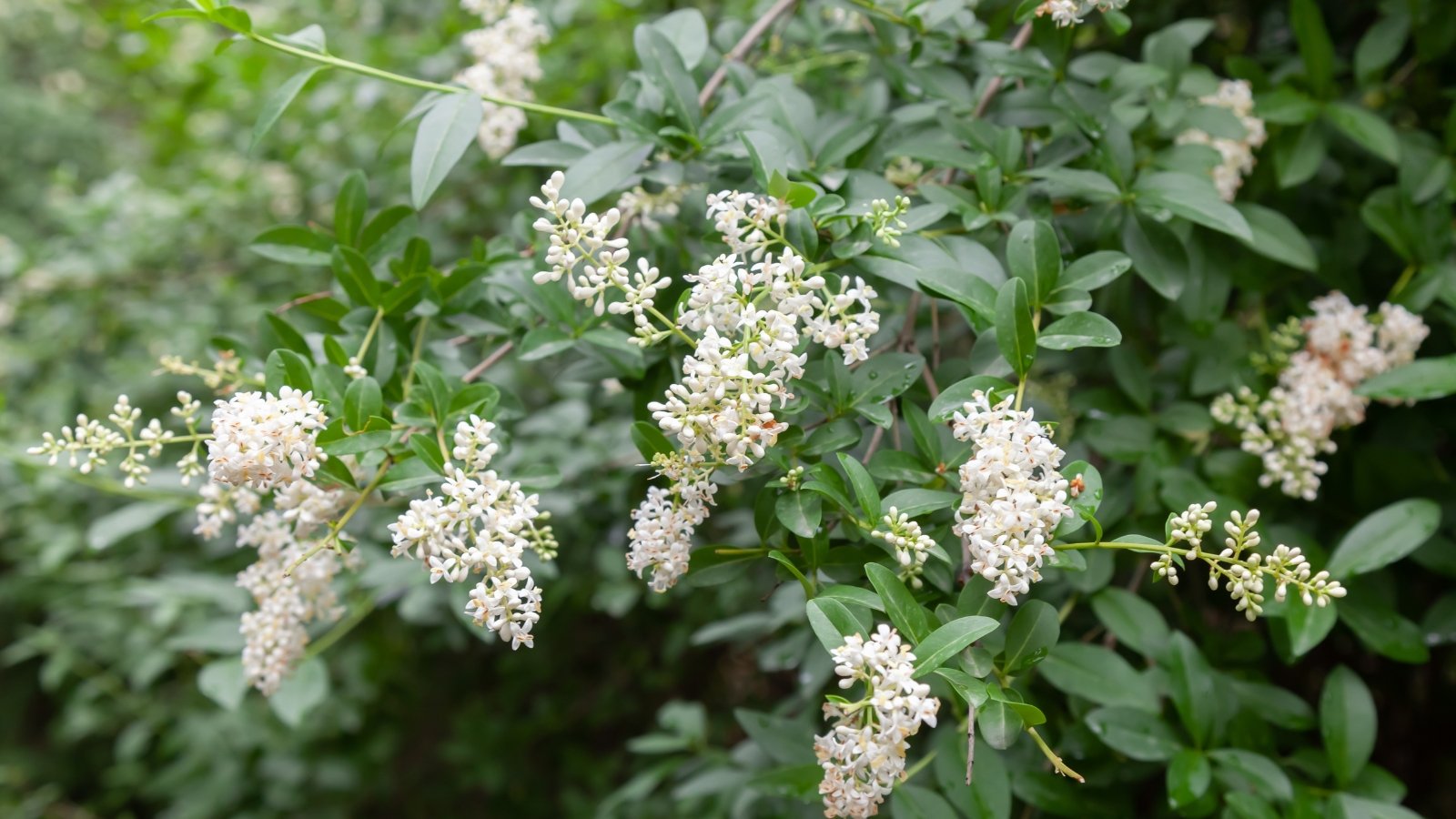
| BOTANICAL NAME | Ligustrum sinense |
| PLANT TYPE | Semievergreen shrub |
| NATIVE ALTERNATIVES | Wax myrtle, Evergreen sumac |
Sold by nurseries and garden centers as an effective privacy screen, Chinese privet is a semi-evergreen shrub that can grow 6-15 feet tall. Sprays of white flowers emerge in the late spring, followed by dark blue fruits later in the summer.
It spreads by suckers as well as seeds, creating dense thickets in fields, forest edges, bottomlands, and roadsides. Chinese privet tolerates a wide range of soil types, and both shade and sun, making it a very opportunistic plant.
From late fall to early winter, use the cut stump method. It has been effective in removing Chinese privet, although this technique can be tedious when you have large, dense thickets of this species.
Common Buckthorn
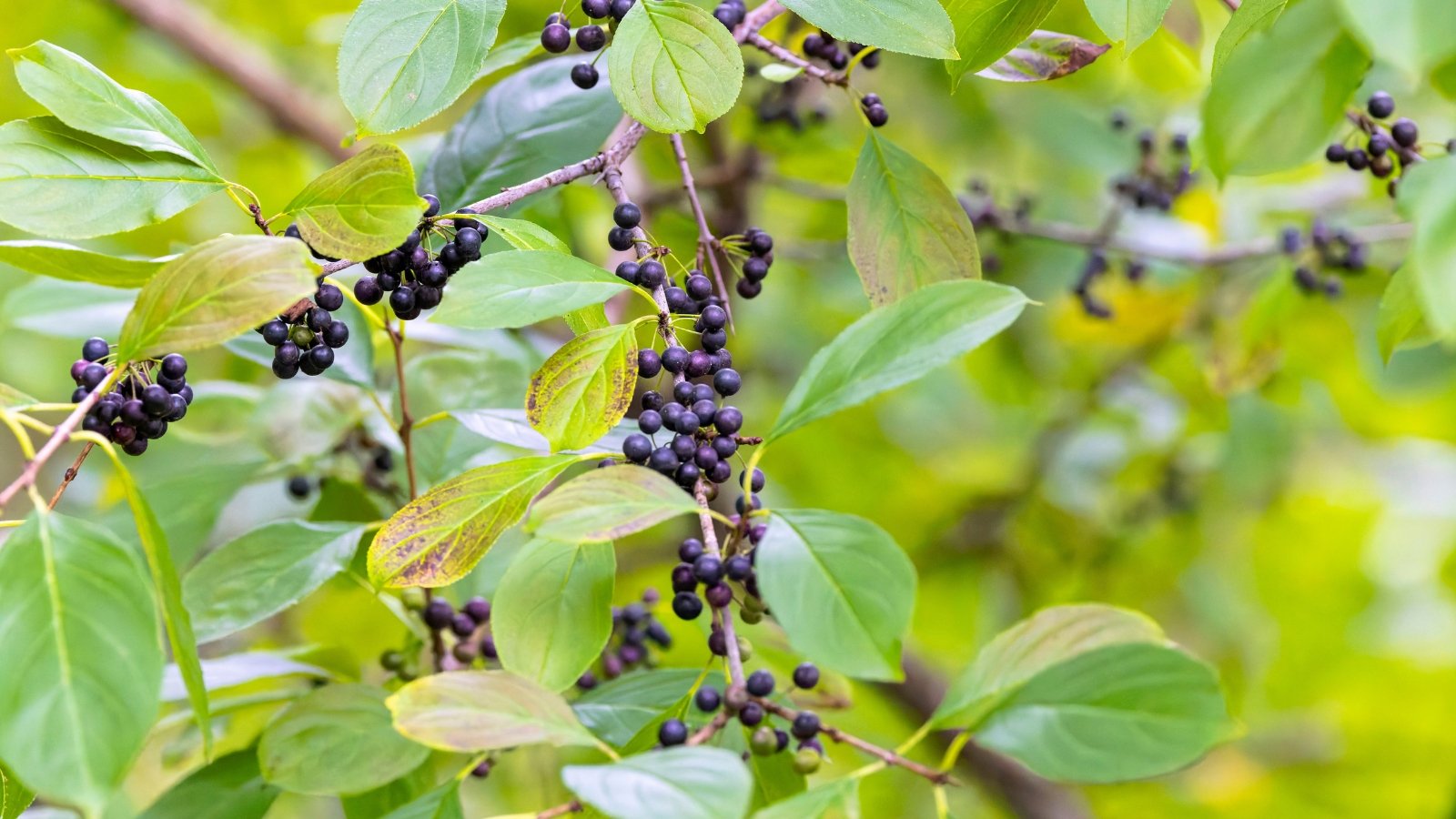
| BOTANICAL NAME | Rhamnus cathartica |
| PLANT TYPE | Deciduous shrub |
| NATIVE ALTERNATIVES | Chokeberry, Alternate-leafed dogwood |
Small clusters of yellowish flowers bloom in May give way to green pea-sized ‘drupes’ that eventually turn black and cling to branches long into the winter. As the name indicates, common buckthorn has sharp thorns on its stems. Common buckthorn spreads by seeds and suckers and will quickly outcompete native plants for light, moisture, and soil nutrients.
One of the first deciduous shrubs to leaf out in early spring and one of the last to lose its leaves in early winter, common buckthorn is easy to identify in the fall. I have had solid success in hand-pulling common buckthorn from my yard, although some of the larger plants required creativity with a winch and four-wheel drive vehicle. For larger buckthorns, dig out the stump and roots.
Biological control with grazing goats has also been shown to be an effective removal method. But take note: Goats will eat everything, not just the common buckthorn! After removal in the fall, make sure to search for seedlings in the following spring.
Glossy Buckthorn
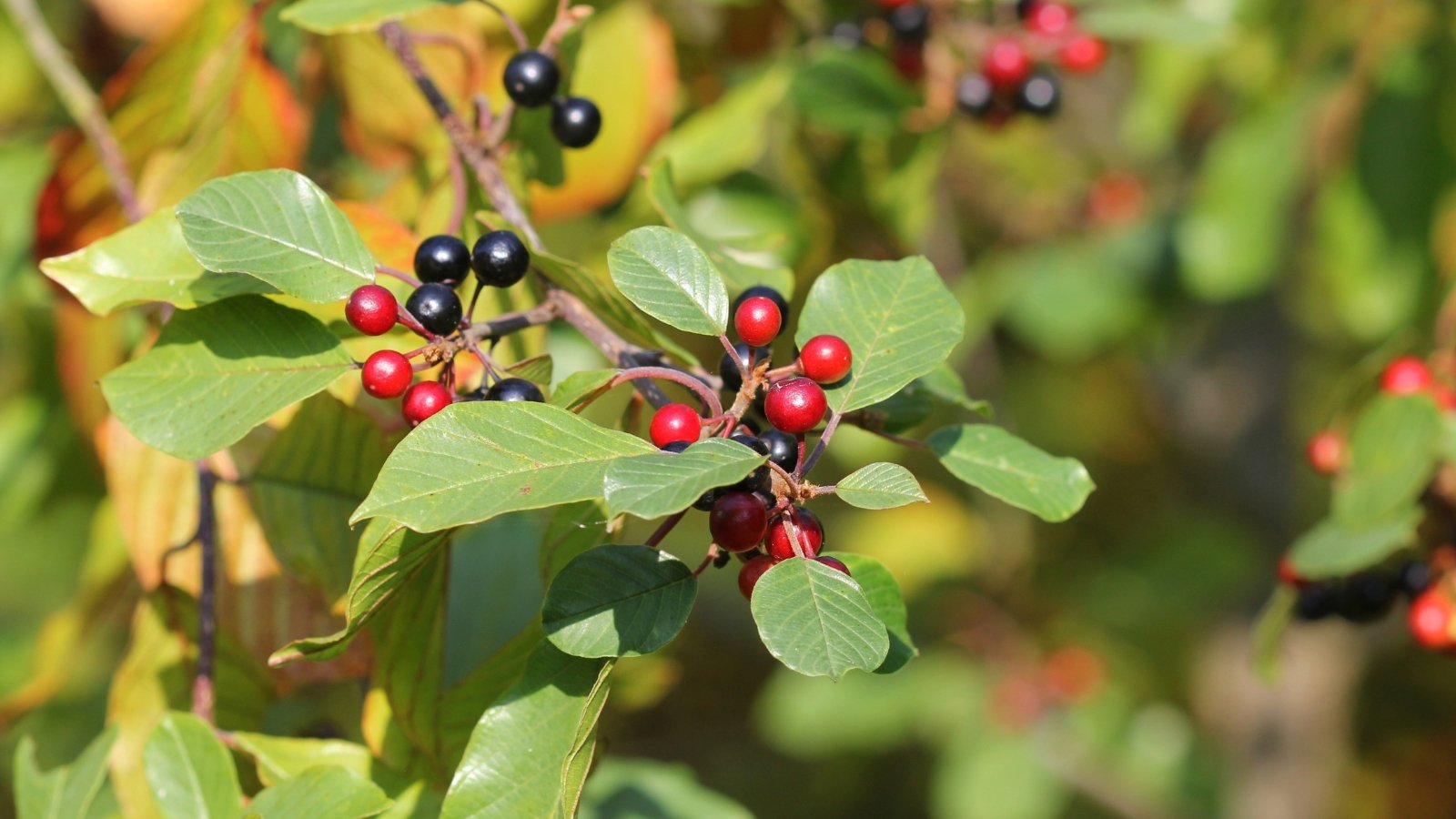
| BOTANICAL NAME | Frangula alnus |
| PLANT TYPE | Deciduous shrub |
| NATIVE ALTERNATIVES | Swamp dogwood, Red-osier dogwood |
Glossy buckthorn is similar to the previously mentioned common buckthorn, although it prefers moist soils and, despite the name, does not have thorns. Native to Asia and Europe, glossy buckthorn is an understory shrub that can easily reach 10-20 feet in height.
It has pale green-white flowers in the spring, followed by reddish-purple berries later in the spring. The berries drop directly beneath the plants, often resulting in a dense understory of seedlings.
Mechanical removal of the entire plant and roots can be an effective way to remove glossy buckthorn, but you’ll need to mulch or replant the disturbed area quickly to avoid a re-emergence of seedlings. Cut stump treatments work well on mature plants and can be applied during the fall when glossy buckthorn still has its leaves and it’s easy to identify.
Japanese Barberry
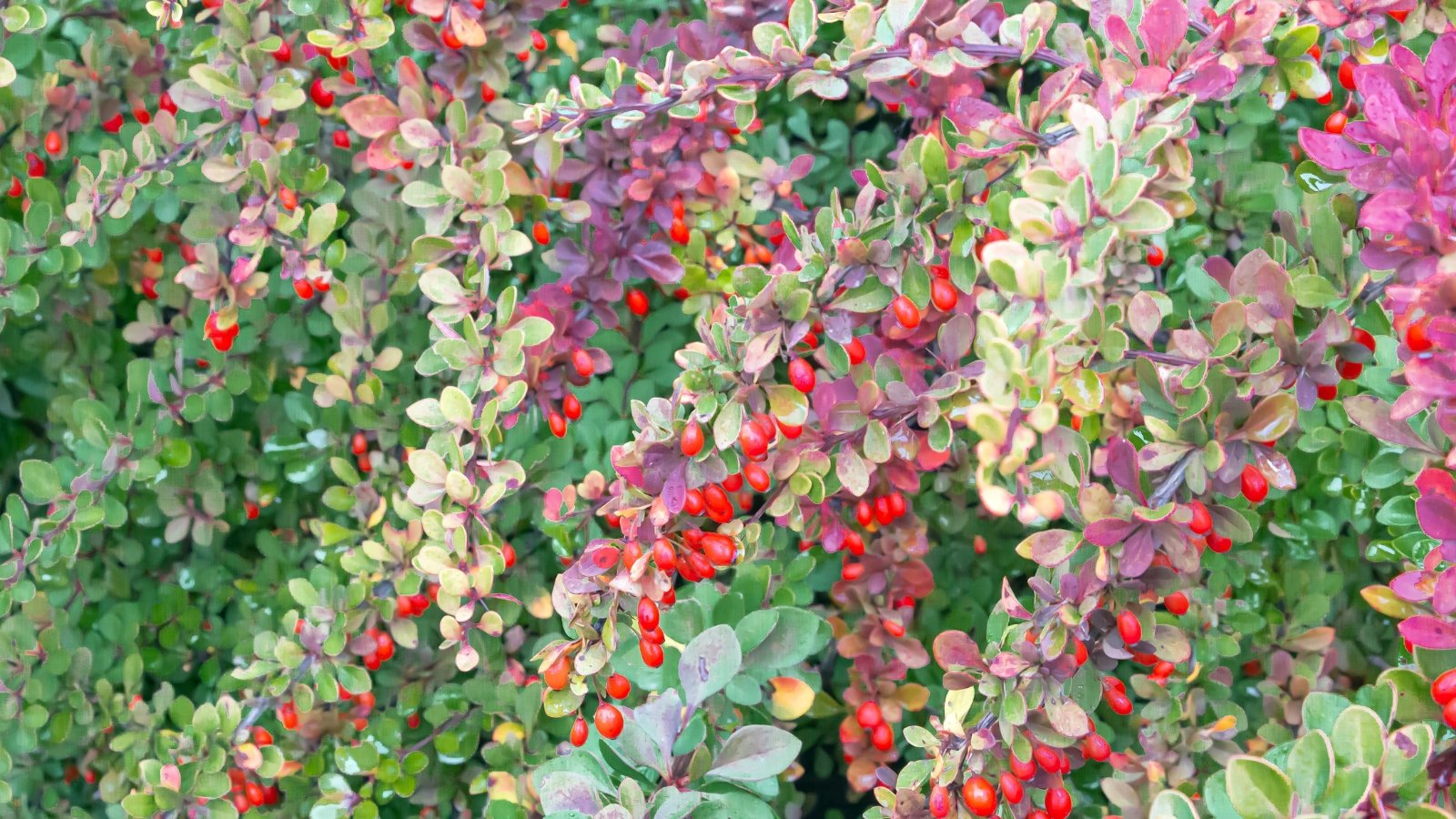
| BOTANICAL NAME | Berberis thunbergii |
| PLANT TYPE | Deciduous shrub |
| NATIVE ALTERNATIVES | Winterberry, American beautyberry |
Japanese barberry was once a popular landscape plant, much admired for its red berries, colorful fall foliage, and resistance to deer (it has inedible thorns!). However, this shrub can quickly escape the yard to form dense thickets throughout nearby forests, wetlands, and meadows. It spreads via seed as well as branches that come in contact with the ground.
Remove the crown of the plant to eliminate it. This is one invasive plant that doesn’t grow back from root fragments left in the ground. If you dig up the majority of them, you’ll be able to get rid of it. Once removed, try planting any one of the many attractive alternatives to Japanese barberry, including winterberry, American beautyberry, or blueberry.
Japanese Knotweed
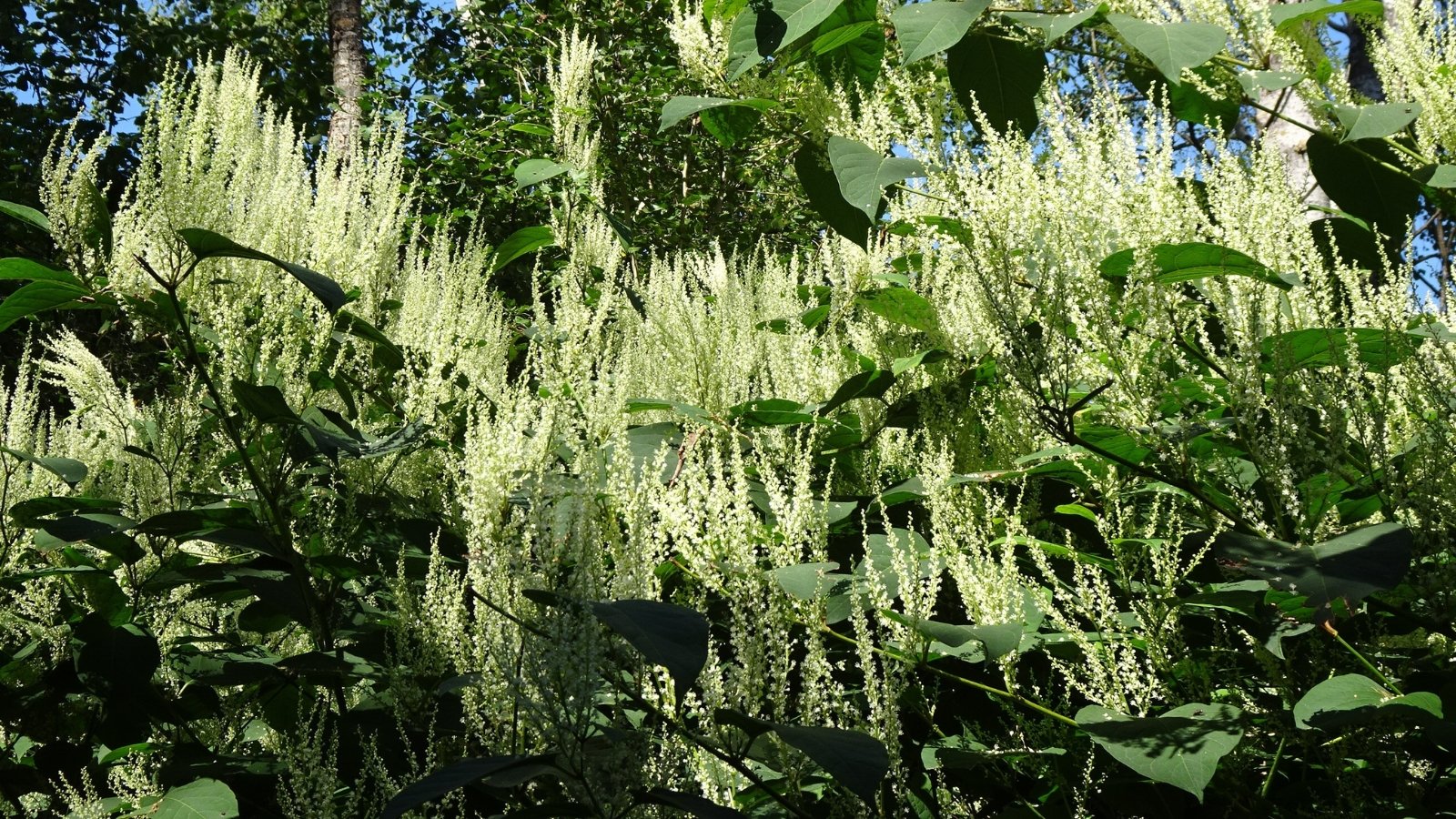
| BOTANICAL NAME | Reynoutria japonica |
| PLANT TYPE | Herbaceous perennial |
| NATIVE ALTERNATIVES | Goatsbeard, Virginia sweetspire |
Japanese knotweed, a native of eastern Asia, is quick to dominate streambanks, floodplain areas, roadsides, and wet meadow edges. This herbaceous perennial can easily form dense, 10-foot-tall stands that crowd out native vegetation. Studies have also shown that Japanese knotweed releases chemicals into the soil that inhibit the growth of surrounding plants.
The most effective management is applying a glyphosate-based herbicide sometime after flowering and before the first hard frost, usually September – November. Waiting until late fall also allows pollinators to take full advantage of the blooming flowers. Like the cut stump method, stems should be cut and then treated with the herbicide. Paint them on the stems to avoid spreading herbicide unintentionally.
For those gardeners who prefer to avoid chemical herbicides, try smothering the knotweed with heavy duty plastic sheeting or tarps. Cut the stems down to the ground in midsummer, once plants have put some of their energy reserves towards vegetative growth. Cover them snugly with the heavy-duty plastic and weigh the edges of the plastic with rocks, bricks, logs, or mulch.
Be patient; this method will take several years. I made the mistake of lifting the plastic sheeting after just one year and the knotweed reemerged! Be sure to keep knotweed and other invasive plant debris out of the compost bin; cut stem fragments have been known to regenerate easily. In that regard, don’t pull suckers, which allows the plant to proliferate. Use the treatments listed above instead.
Porcelain-Berry
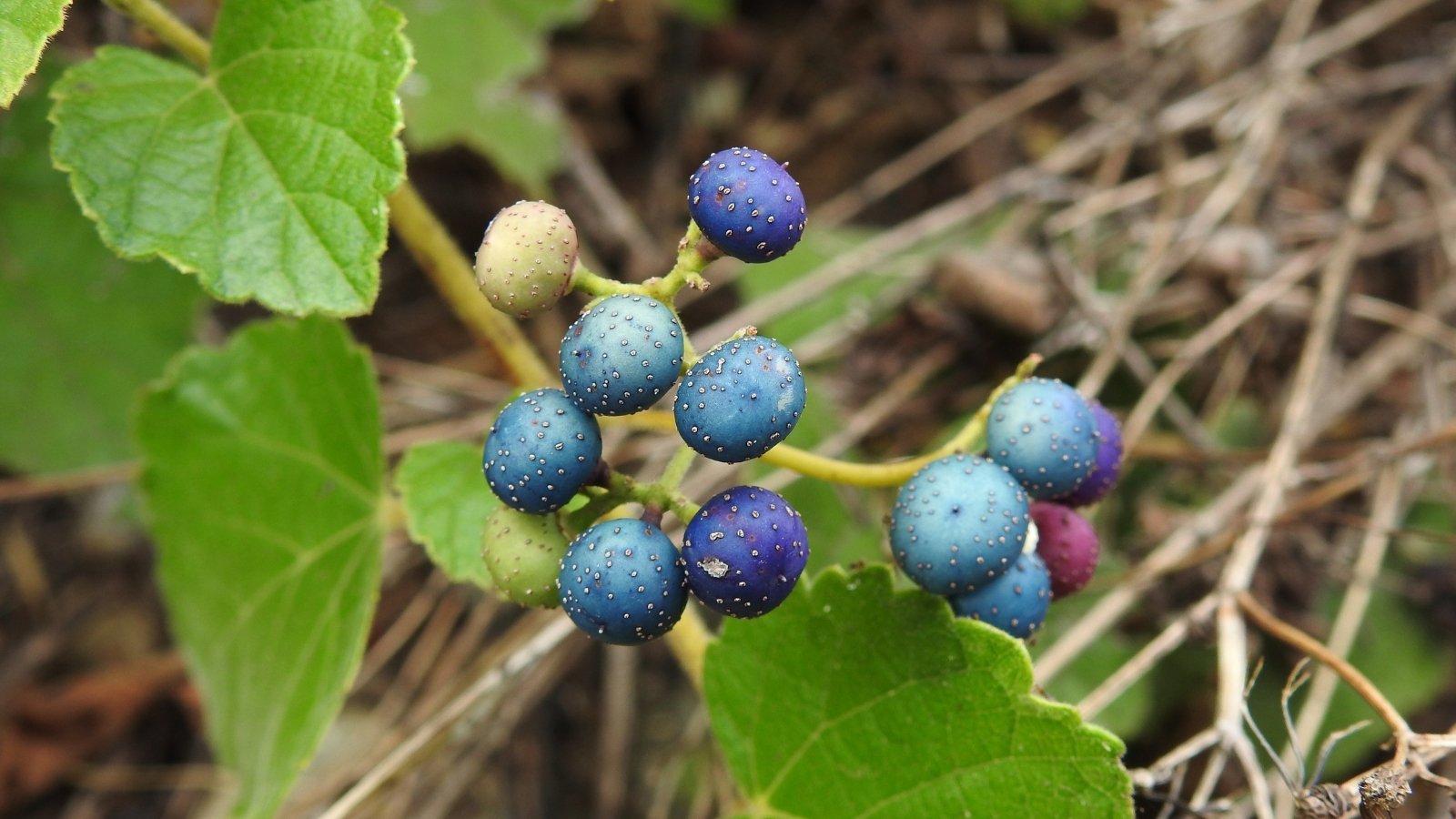
| BOTANICAL NAME | Ampelopsis brevipedunculata |
| PLANT TYPE | Deciduous woody vine |
| NATIVE ALTERNATIVES | Virgin’s bower, Dutchman’s pipe |
Also referred to as Amur peppervine, porcelain berry and porcelain vine, porcelain-berry is a perennial woody vine in the grape family. White berries emerge from this vigorous vine in the fall and turn vibrant purple and blue.
Introduced to North America from Asia in the late 1800’s, porcelain-berry is now widely spread across the East Coast. As a vine, porcelain-berry can easily grow 20-25 feet long and overtake and shade out native vegetation.
Hand-pull young vines in the fall to prevent flower buds from forming the following season. Take care to dispose of the all berries and roots you can. For larger, more established vines, cut and treat the vine with a chemical herbicide or dig out the entire plant with a shovel. Multiple treatments over several seasons may be needed to completely eradicate porcelain-berry.
Tree of Heaven
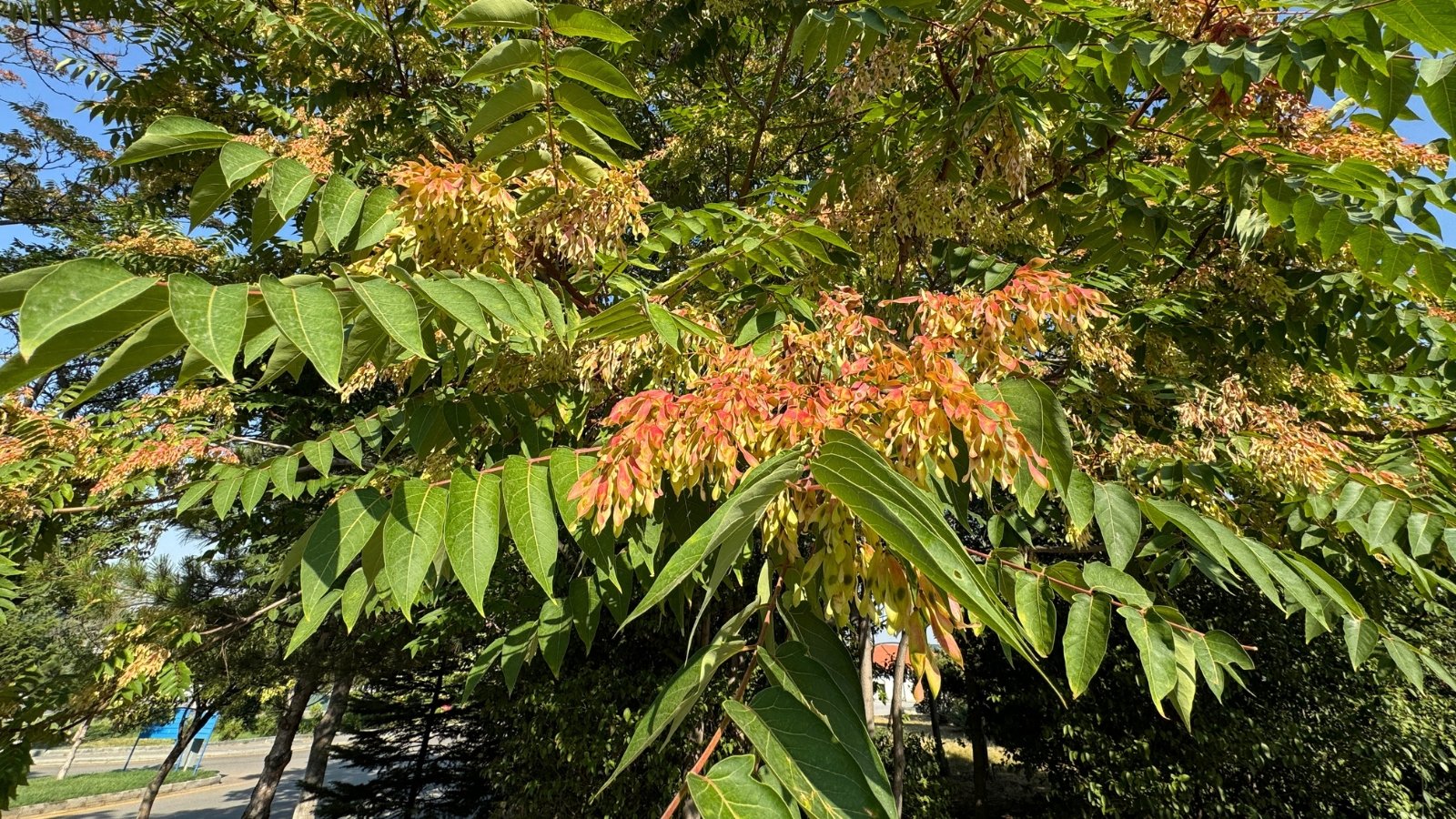
| BOTANICAL NAME | Ailanthus altissima |
| PLANT TYPE | Deciduous tree |
| NATIVE ALTERNATIVES | Scarlet buckeye, Butternut |
A native of China, Tree of Heaven was first introduced to North America as an ornamental shade tree in the 18th and 19th century. A fast-growing tree, Tree of Heaven can reach 80 feet in height. It tolerates poor soils and substandard air quality. It generally thrives in disturbed environments, making it the perfect plant for invading urban areas.
However, it grows in dense colonies and spreads easily by suckering. This plant also produces hundreds of thousands of seeds, which are dispersed easily by the wind. As such, Tree of Heaven escaped cultivation and is now growing along forest edges, roadsides, fence lines, open meadow areas, and in woodlands. It is invasive in dozens of states.
Tree of Heaven is very challenging to control, due to its vast root system and ability to re-sprout quickly. Controlling the root system is key to eradicating this invasive plant. Handpull young saplings and seedlings immediately.
Unlike many of the other previously mentioned plants, Tree of Heaven does not respond well to the cut stump method; it simply continues to root sucker. Herbicides can be painted on the leaves, bark, or stems during the late summer and fall.
Key Takeaways
Depending on the targeted species and its life cycle, fall can be the perfect time to take on invasive plants and reclaim your garden. After treating any invasive plants in the fall, make sure to follow up in spring to check for new growth or seedlings. Promptly fill gaps with new plantings of native species. Nature abhors a vacuum!




